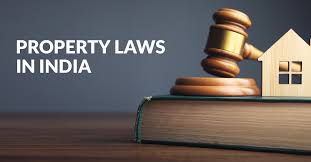View News
Basics-of-Property-Law-Easements-Fixtures-and-Land-Tenures

Basics of Property Law: Easements, Fixtures, and Land Tenures
~ Sura Anjana Srimayi
Introduction
At first glance, property law seems straightforward: it concerns who owns what, and from whom. Concepts like deeds, titles, and adverse possession dominate textbooks and legal discussions. However, beneath this simple façade lies a nuanced legal framework shaped by centuries of doctrine and history. This article explores three foundational, yet often under-discussed, pillars of property law: easements, fixtures, and the legacy of land tenures. Though these may not be as dramatic as disputes over mansions or estates, they govern the practical realities of how land is used, shared, and transferred in society.
Easements: Invisible Rights, Tangible Impact
An easement is a non-possessory, incorporeal right that allows someone to use another’s land for a specific purpose without owning it. Unlike licenses or leases, easements typically "run with the land," meaning they continue even after the property changes hands.
The most common example is a right-of-way—allowing someone to cross neighboring land to reach their own. But easements can also grant rights to air, light, support, or to run utility lines over property. Though invisible, these rights have profound implications for land use.
Types of Easements
-
Appurtenant Easements
These benefit a specific parcel of land (the dominant tenement) and burden another (the servient tenement). The easement is tied to the land, not the person—transferring along with ownership.
Example: A driveway easement benefiting Parcel B that crosses Parcel A. -
Easements in Gross
These benefit an individual or entity, not a parcel of land. They are personal in nature and commonly used by utility companies for pipelines, cables, etc.
Example: A power company’s right to install and maintain lines across private land.
Creation of Easements
-
Express Grant or Reservation
Formed through a written deed—either by granting an easement to someone else or reserving it for oneself during sale or subdivision. -
Implied Easements
Created by law based on necessity or prior usage:-
Easement by Necessity
Arises when land becomes landlocked due to subdivision, implying access rights over adjoining land retained by the seller. -
Easement by Prior Use (Quasi-Easement)
If one part of land was used in a way benefiting another part before subdivision, and this use was continuous, apparent, and reasonably necessary, an easement may be implied.
-
-
Prescriptive Easements
Similar to adverse possession, these arise from continuous, open, and adverse use of land for a statutory period (e.g., 10–20 years). The use must be without permission and must resemble a claim of right.
As urban development intensifies and infrastructure expands, easements become critical to shared resource usage and effective land management.
Fixtures: Bridging Real and Personal Property
The law distinguishes between real property (land and permanent attachments) and personal property (movable goods). But fixtures blur this line.
A fixture starts as personal property but becomes real property once affixed to land in a manner suggesting permanence. This distinction is vital during property sales, leases, and foreclosures—fixtures generally transfer with the land unless excluded by contract.
Three-Part Test for Determining Fixtures
-
Degree of Annexation
How securely is the item attached? An item firmly bolted or built into the structure is more likely a fixture.
Example: Built-in shelves vs. movable bookshelves. -
Purpose or Adaptation
Was the item specially adapted to the property’s function?
Example: Custom-fitted blinds are fixtures; generic curtains are not. -
Intention of the Annexor (Most important)
Did the person installing the item intend it to remain permanently? Courts infer this from the nature of the item, method of attachment, and the relationship between parties.
Example: A tenant's machinery installed for business use (trade fixtures) is generally removable; a homeowner’s water heater is not.
The fixture doctrine reflects the fluid boundaries of ownership, revealing how context and purpose govern property classification.
Legacy of Land Tenure: Echoes of Feudalism
Modern property law still carries the marks of feudal land tenure, a system where land was held—not owned—in return for services to a superior lord.
Feudal Origins and Reforms
Under feudalism, all land belonged to the Crown, and individuals held land through hierarchical "tenures." Obligations ranged from military service to rents.
Over time, statutory reforms like the Statute of Quia Emptores (1290) and the Tenures Abolition Act (1660) abolished most feudal incidents and allowed free alienation of land, giving rise to fee simple ownership—the most complete form of private landholding today.
Enduring Legal Concepts from Feudal Tenure
-
Tenure
The term persists in discussions of how land is held legally, though services are no longer owed to a lord. -
Escheat
Land reverts to the state if an owner dies without heirs—a modern continuation of feudal reversionary rights. -
Estates in Land
Concepts like fee simple, life estate, and leasehold reflect feudal classifications of time-bound interests in land. -
Seisin
Once central to land transfer and legal actions, it laid the groundwork for current notions of possession and ownership. -
Covenants Running with the Land
These enforce promises (e.g., to maintain a wall or not to build above a height) across successive owners—an idea inherited from obligations that followed land under feudal law.
The influence of feudal tenure endures not as direct control but as structural logic—shaping how we define, transfer, and protect land rights.
Conclusion
Behind the simplicity of “ownership” lies a world of complexity. Easements, fixtures, and tenure systems may be less visible than title deeds, but they critically shape land use and legal disputes.
-
Easements illustrate how rights of use without ownership can powerfully affect property.
-
Fixtures demonstrate the ambiguity of classifying objects between realty and personalty.
-
Land tenure history explains why we talk about holding land rather than owning it absolutely.
Understanding these lesser-known doctrines enhances not only our grasp of legal property structures but also our appreciation of the delicate balance between private rights, public needs, and historical legacy.
Unlock the Potential of Legal Expertise with LegalMantra.net – Your Trusted Legal Consultancy Partner
Disclaimer: Every effort has been made to ensure the accuracy of this material. Nevertheless, inadvertent errors may occur. Readers are encouraged to notify the author of any discrepancies, which will be addressed in future editions. Sources include newspapers, journals, bare acts, case materials, Chartered Secretary, and research papers.

